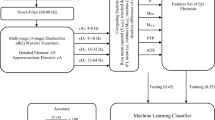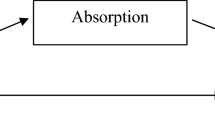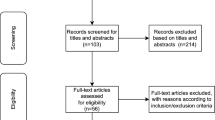Abstract—
A coherence analysis of Internet and game addicts was carried out. The results of studies indicate changes in the functional interaction of various cortical zones in both Internet and game addict groups. However, tendencies of these changes are opposite, which is expressed in a decrease in total coherence level in Internet addicts and in an increase in game addicts. In the course of study, a disturbance in the frontal-occipital gradient was found in both experimental groups. An increase in interhemispheric coherence in the occipital regions among Internet addicts is noticed against the background of a decreased synchronization of wave oscillations in frontal areas; and among game addicts, it is noticed against the background of increased synchronization. The noticed changes in cortical neurodynamics are most likely of compensatory nature, aimed at maintaining interaction of brain structures by reducing functional activity of the brain. In case of Internet addiction, addictive behavior is most likely determined by decreased inhibitory influence of the cerebral cortex on the subcortical structures of the brain, while in game addicts it is determined by excessive activity of the limbic system. The obtained data make it possible to form different approaches for the treatment of Internet and game addiction. Thus, while in getting rid of Internet addiction, the focus should be on increasing coherence in the prefrontal cortex, the treatment of game addiction, on the contrary, should be aimed at reducing the degree of synchronization in these areas.





Similar content being viewed by others
REFERENCES
Balakrishnan, J. and Griffiths, M.D., Social media addiction: what is the role of content in YouTube? J. Behav. Addict., 2017, vol. 6, no. 3.
Petry, N.M. and O’Brien, C.P., Internet gaming disorder and the DSM-5, Addiction, 2013, vol. 108, no. 7, p. 1186.
Alhabash, S. and Ma, M., A tale of four platforms: motivations and uses of Facebook, Twitter, Instagram, and Snapchat among college students? Soc. Media + Soc., 2017, vol. 3, no. 1, p. 1.
Kolesnikov, V.N., Melnik, Yu.I., and Teplova, L.I., Internet activity and problematic Internet use in adolescence, Natl. Psykhol. Zh., 2019, vol. 1, no. 1(33), p. 34.
Andreassen, C.S., Billieux, J., Griffiths, M.D., et al., The relationship between addictive use of social media and video games and symptoms of psychiatric disorders: a large-scale cross-sectional study, Psychol. Addict. Behav., 2016, vol. 30, no. 2, p. 252.
Błachnio, A., Przepiorka, A., Senol-Durak, E., et al., The role of personality traits in Facebook and Internet addictions: a study on Polish, Turkish, and Ukrainian samples, Comput. Hum. Behav., 2017, vol. 68, p. 269.
Skvortsova, E.S. and Postnikova, L.K., The prevalence and structure of Internet use among adolescent students, Vopr. Narcol., 2015, no. 4, p. 29.
Rassadina, T.A., Internet addiction: information-communicative aspect, Obshch. Nauki.: Sotsiol., 2015, no. 2(34), p. 98.
Ponizovsky, P.A. and Shmukler, A.B., Internet addiction: a clinical case report of gaming disorder, Vopr. Narcol., 2020, no. 4(187), p. 133.
Grebennikova, N.V., Characterological features of older adolescents prone to computer-gaming addiction, Nauchn. Trudy Mosk. Gumanitarnigo Univ., 2017, no. 3, p. 4.
Egorov, A.Yu., Non-chemical addictions: issues in classification and therapy, Shkola V. M. Bekhtereva: ot istokov do sovremennosti (V. M. Bekhterev’s School: from Origins to Modern Times) (Proceedings of All-Russian Theoretical and Practical Conference with International Participation, Dedicated to the 160th Anniversary of Vladimir Mikhailovich Bekhterev and the 110th Anniversary of the St. Petersburg Research Psychoneurological Institute after V. M. Bechterev), St.-Petersburg, May 18—19, 2017), St.-Petersburg.: Al’ta Astra, 2017, p. 286.
Malygin, V.L., Khomeriki, N.S., and Merkurieva, Yu.A., Bio-psycho-social model of internet addiction behavior in adolescents: risk factors and principles of therapy, Nevrol. Vestn. Zh. im. V.M. Bekh-tereva, 2017, vol. 49, no. 1, p. 88.
Perezhogin, L.O., Internet addiction in the focus of clinical psychiatry: 20 years of clinical research, Obraz. Lichnosti, 2017, no. 3, p. 19.
Khil'kevich, S.O. and Shilova, O.V., Nekhimicheskie zavisimosti: diagnostika, lechenie, profilaktika: ucheb.-metod. posobie dlya studentov 5 kursa lechebnogo fakul’teta i fakul’teta po podgotovke spetsialistov dlya zarubezhnykh stran meditsinskikh vuzov (Non-chemical Addictions: Diagnostics, Treetment, Prophylaxis: Study Guide for 5th Year Students of the Medical Faculty and the Faculty for Training Specialists for Foreign Countries), Gomel: Gomel Gos. Med. Univ., 2017.
Balconi, M., Evidences from rewarding system, FRN and P300 effect in internet-addiction in young people, Brain Sci., 2017, vol. 7, no. 81, p. 16.
Ben-Yehuda, L., Internet addiction by using the smartphone-relationships between internet addiction, frequency of smartphone use and the state of mind of male and female students, J. Reward Defic. Syndr. Addict Sci., 2016, vol. 2, no. 1, p. 22.
Choi, J-S., Altered brain activity during reward anticipation in pathological gambling and obsessive-compulsive disorder, PLoS One, 2012, vol. 7, no. 9. e45938
Kochetkov, N.V., Internet and computer games addiction in the works of Russian psychologists, Sots. Psikhol. O-vo., 2020, vol. 11, no. 1, p. 27.
Durkee, T., Carli, V., and Floderus, B., Pathological internet use and risk-behaviors among European adolescents, Int. J. Environ. Res. Publ. Health, 2016, vol. 13, no. 3, p. 294.
Egorov, A.Yu., Neiropsikhologiya deviantnogo povedeniya (Neuropsychology of Deviant Behavior), St.-Petersburg.: Rech’, 2006.
Soldatkin, V.A., Bukhanovsky, A.O., and Kalmykov, E.A., Neurovisual characteristic of brain in patients suffering from pathological gambling, Ross. Psikhiatr. Zh., 2011, no. 1, p. 15.
Marazziti, D., Presta, S., and Baroni, S., Behavioral addictions: a novel challenge for psychopharmacology, CNS Spectr, 2014, vol. 19, no. 6, p. 486.
Munno, D., Saroldi, M., and Bechon, E., Addictive behaviors and personality traits in adolescents, CNS Spectr, 2016, vol. 21, no. 2, p. 207.
Ivanitskaya, L.N., Lednova, M.I., and Pustovaya, O.V., Study of EEG responses to functional loads in persons who abuse alcohol, Valeologia, 2010, vol. 15, no. 3, p. 4.
Padilla, M., Colrain, I., and Sullivan, E., Electrophysiological evidence of enhanced performance monitoring in recently abstinent alcoholic men, Psychopharmacology, 2011, vol. 213, no. 1, p. 81.
Rabadanova, A.I. and Taigibova, Z.A., Characteristic EEG patterns in individuals with non-chemical addiction, Hum. Physiol., 2020, vol. 46, no. 6, p. 636. https://doi.org/10.1134/S0362119720050114
Soroko, S.I., Nagornova, Zh.V., Rozhkov, V.P., and Shemyakina, N.V., Age-specific characteristics of EEG coherence in children and adolescents living in the European North of Russia, Hum. Physiol., 2015, vol. 41, no. 5, p. 517. https://doi.org/10.1134/S0362119715050151
Melnikova, T.S. and Zheleznova, E.V., Interhemispheric relations between symmetric cortex areas inferred from the coherent analysis of EEG of a woman with epilepsy, Doctor.Ru, 2018, no. 1(145), p. 44.
Melnikova, T.S., Tsukarzi, E.E., and Mosolov S.N., Dynamics of interhemispheric connections of symmetrical cortical zones according to EEG coherent analysis in drug-resistant patients with depressive disorders in the treatment of transcranial magnetic stimulation, Sovrem. Ter. Psikh. Rasstroistv, 2019, no. 2, p. 2.
Kichuk, I.V., Solovieva, N.V., Makarova, E.V., et al., Perspectives of EEG computer analysis in diagnosis of schizophrenia, Sots. Klin. Psikhiatr., 2020, vol. 30, no. 3, p. 73.
Melnikova T.S., Storozhakova Ya.A., Lapin I.A. EEG coherence analysis in the first episode and at remote stage of paranoid schizophrenia, Sots. Klin. Psikhiatr., 2010, vol. 20, no. 4, p. 39.
Ragozinskaya, V.G., Specific EEG spectral power and coherence in mental distress, Izv. Vyssh. Uchebn. Zaved., 2019, no. 4, p. 78.
Varlamov, A.A. and Strelets, V.B., EEG coherence analysis in depressive disorders and its possible use in clinical practice: a literature review, Zh. Vyssh. Nerv. Deiat. im. I. P. Pavlova, 2013, vol. 63, no. 6, p. 613.
Knyazev, G.G., Savostyanov, A.N., Bocharov, A.V., and Rimareva, J.M., Anxiety, depression, and oscillatory dynamics in a social interaction model, Brain Res., 2016, vol. 1644, p. 62.
Putman, P., Resting state EEG delta–beta coherence in relation to anxiety, behavioral inhibition, and selective attentional processing of threatening stimuli, Int. J. Psychophysiol., 2011, vol. 80, no. 1, p. 63.
Young, K.S., Internet addiction: the emergence of a new clinical disorder, CyberPsychol. Behav., 1998, vol. 1, no. 3, p. 237.
Bryun, E.A., Buzik, O.Zh., Koporov, S.G., et al., Profilaktika, lechenie i reabilitatsiya igrovoi zavisimosti: metodicheskie rekomendatsii (Prevention, Treatment and Rehabilitation of Gambling Addiction: Practice Guidelines), Mosow: Media-Studiya, 2016.
Kulaichev, A.P., Metrology of computational EEG analysis, Aktual. Probl. Gumanitarnykh Estestv. Nauk, 2018, no. 8, p. 17.
Batuev, A.S. and Iovleva, N.N., Changes in spectral coherent characteristics of EEG in the early postpartum period among mothers with anxious and depressed mood, Zh. Vyssh. Nerv. Deiat. im. I. P. Pavlova, 2003, vol. 53, no. 6, p. 712.
Özerdem, A., Güntekin, B., Saatçi, E., et al., Disturbance in long distance gamma coherence in bipolar disorder, Prog. Neuro-Psychopharmacol. Biol. Psychiatry, 2010, vol. 34, no. 6, p. 861.
Melnikova, T.S. and Alfimova, M.V., Application of EEC coherence analysis to evaluation of brain integrative activity in schizophrenia, Usp. Fiziol. Nauk., 2013, vol. 44, no. 2, p. 30.
Andreeva, N.G., Strukturno-funktsional’naya organizatsiya nervnoi sistemy: uchebnoye posobie (Structural and Functional Organization of the Nervous System: Textbook), St. Petersburg: S.-Peterb. Univ., 2003.
Stuss, D.T. and Alexander, M.P., Executive function and the frontal lobes: a conceptual view, Psychol. Res., 2000, vol. 63, nos. 3—4, p. 289.
Cognition, Brain, and Consciousness: Introduction to Cognitive Neuroscience, Baars, B. and Gage, N., Eds., Academic Press, 2010, 2nd ed.
Ivanov, L.B., Prikladnaya komp’yuternaya elektroentsefalografiya (Applied Computer Electroencephalography), Moscow: MBN, 2004.
Melnikova, T.S. and Lapin, I.A., Coherent analysis of the EEG in depressive disorders of various origins, Sots. Klin. Psikhiatr., 2008, vol. 18, no. 3, p. 27.
Aftanas, L.I., Emotsional’noe prostranstvo cheloveka: psikhofiziologicheskii analiz (Human Emotional Space: Psychophysiological Analysis), Novosibirsk: Sibirskoye Otdeleniey Rossiiskoi Akademii Meditsinskich Nauk, 2000.
Fedotova, I.R. and Frolov, A.A., Septal activation and control of limbic structures, Zh. Vyssh. Nerv. Deiat. im. I. P. Pavlova, 2015, vol. 65, no. 2, p. 139.
Gray, J.A. and McNaughton, N., The Neuropsychology of Anxiety: an Enquiry into the Functions of the Septo-Hippocampal System, Oxford University Press, 2000.
Levin, E.A., Savost’yanov, A.N., Lazarenko, D.O., and Knyazev, G.G., Role of oscillatory systems of human brain in activation and inhibition of movements, Byull. Sib. Otd. Ross. Akad. Med. Nauk, 2007, vol. 27, no. 3, p. 64.
Knyazev, G.G., Savostyanov, A.N., and Levin, E.A., Alpha oscillations as a correlate of trait anxiety, Int. J. Psychophysiol., 2004, vol. 53, no. 2, p. 147.
Minzer, M.F., Electroencephalographic patterns of functional disorder diagnostics, Zdorov’e Vsekh, 2012, no. 2, p. 13.
Melnikova, T.S., Lapin, I.A., Sarkisyan, V.V., The use of coherent EEG analysis in psychiatry: a review, Sots. Klin. Psikhiatr., 2009, vol. 19, no. 1, p. 90.
Danilova, N.N., Psikhofiziologiya: uchebnik dlya vuzov (Psychophysiology: a Textbook for Universities), Moscow: ASPENT, 2001.
Roux, F. and Uhlhaas, P.J., Working memory and neural oscillations: alpha-gamma versus theta-gamma codes for distinct WM information? Trends Cogn. Sci., 2014, vol. 18, no. 1, p. 16.
Korobeinikova, I.I. and Karatygin, N.A., Spatial characteristics of human EEG high-frequency range alpha rhythm in cognitive activity under conditions of exogenous noise, Akad. Zh. Zapadn. Sib., 2019, vol. 15, no. 3 (80), p. 57.
Rabadanova, A.I. and Taigibova, Z.A., The influence of non-chemical addictions on human cognitive functions, Zh. Nauchn. Statei. Zdorov’e Obraz. XXI Veke, 2018, vol. 20, no. 9, p. 27.
Nichol, K., Deeny, S.P., and Seif, J., Exercise improves cognition and hippocampal plasticity in APOE ε4 mice, Alzheimers Dement., 2009, vol. 5, no. 4, p. 287.
Lutz, A., Greischar, L.L., and Rawlings, N., Long-term meditators self-induce high-amplitude gamma synchrony during mental practice, Proc. Natl. Acad. Sci. U.S.A., 2004, vol. 101, no. 46, p. 16369.
Aftanas, L.I. and Golosheikin, S.A., Changes in cortical activity in altered states of consciousness: the study of meditation by high-resolution EEG, Hum. Physiol., 2003, vol. 29, no. 2, p. 143. https://doi.org/10.1023/A:1022986308931
Schutter, D.J., Leitner, C., Kenemans, J.L., and van Honk, J., Electrophysiological correlates of cortico-subcortical interaction: a cross-frequency spectral EEG analysis, Clin. Neurophysiol., 2006, vol. 117, no. 2, p. 381.
Palmiero, M. and Piccardi, L., Frontal EEG asymmetry of mood: a mini-review, Front. Behav. Neurosci., 2017, vol. 11, p. 224.
Kichuk, I.V., Petrova, E.A., Mitrofanov, A.A., et al., Changes in EEG and serotonin concentration upon depressive and anxiety disorders, Neurology, Neuropsychiatry, Psychosomatics, 2016, vol. 8, no. 3, p. 34.
Aleksandrov, M.V., Ivanov, L.B., and Lytaev, S.A., Elektroentsefalografiya (Electroencephalography). St. Petersburg: Strategii Budushchego, 2019.
Murtazina, E.P., Matyulko, I.S., and Zhuravlev, B.V., Investigation of the behavioral and neurophysiological bases of prosocial and cooperative relationships, Mezhdunar. Zh. Priklad. Fundam. Issled., 2018, no. 11-1, p. 188.
Zhuravlev, B.V., Murtazina, E.P., and Shpringel, N.A., Analysis of the EEG spectral-coherent characteristics among subjects under the condition of novelty sensorimotor activities, Neirokomp’yutery: Razrab. Primen., 2016, no. 5, p. 38.
Fonseca, M.J., Emotions recognition using EEG signals: a survey, IEEE Trans. Affective Comput., 2017, vol. 10, no. 3, p. 374.
ACKNOWLEDGMENTS
The authors express their gratitude to the director of the PSI-FACTOR Psychological Center, affiliated with Dagestan State University, Arsen Nabievich Dzhabrailov, for the provided assistance in the performance of the study.
Author information
Authors and Affiliations
Corresponding author
Ethics declarations
Conflict of interest. The authors declare no overt and potential conflict of interest related to the publication of this paper.
Statement of compliance with standards of research involving humans as subjects. All the studies are carried out according to the principles of biomedical ethics, formulated in the Helsinki Declaration (1964) and its following updates and approved by the local bioethical committee of the Dagestan State University (Makhachkala). Each participant of the study gave voluntary written informed consent, which he or she signed after being clarified about the potential risks and advantages, as well as about the character of the impending study.
Additional information
Translated by A. Khaitin
Rights and permissions
About this article
Cite this article
Taigibova, Z.A., Rabadanova, A.I. EEG Coherence as an Indicator of Integrative Brain Processes in Internet and Game Addiction. Hum Physiol 48, 421–431 (2022). https://doi.org/10.1134/S0362119722040120
Received:
Revised:
Accepted:
Published:
Issue Date:
DOI: https://doi.org/10.1134/S0362119722040120




